If you could only ever have one bike in your shed then we’d bet good money that you would pick a reliable, lightweight rig with a well-chosen spec. We’ve just got our hands on a bike that appears to tick all those boxes, so we’ve put the Liteville 101 MK1 Trail Factory Machine through the wringer to see if it’s as much as an all-rounder as it claims.
With the Liteville 301 having cemented its rep as a serious do-all, the brand from Germany’s Allgäu Alps have turned the heat up (and the travel down) to create the 101 MK1, adding the option to mount a 29er at the rear. A quick glance at the bike is testament to the know-how coursing through its frame, and Liteville have clearly built on past experience to design another slick and understated bike with a handful of exciting features.
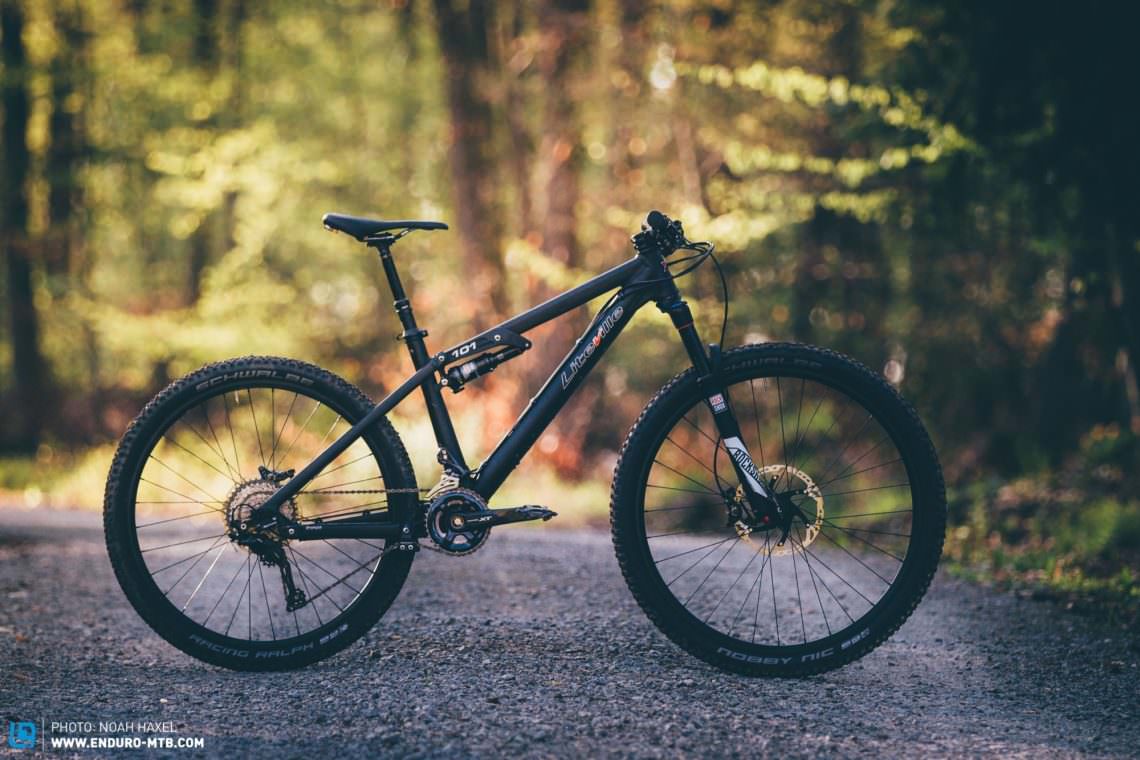
The details of the Liteville 101 MK1 Trail Factory Machine
Coming from a brand that are known in the industry for wisely chosen, well-integrated details and features on their bikes, it’s reassuring to see that the Liteville 101 MK1 is no exception. From the spare derailleur hanger screw with predetermined breaking point to the Allen key in the X-12 thru-axle that is compatible with virtually all of the bolts on the bike; these are the sort of details that’d we rate on any bike.
Here are our top 5 features:
- The frame is compatible with chain guides and derailleur protectors from Syntace that can be subtly and simply fitted to the bike.
- Uniform bolt sizes across the bike make servicing and setup much easier, the X-FIX tool in the rear axle removes the need for extra tools.
- The DuoLink rear end gives room for play with the wheelsizes, known as ScaledSizing, without majorly affecting the frame’s geometry.
- The DynaLevel sag indicator means you can rapidly set-up and fettle the rear shock while you’re sitting on the bike.
- Mechanicals can be fixed fairly quickly thanks to the stable derailleur hanger with its predetermined breaking point on the screw, as well as the spare screw integrated onto the downtube.
Another well thought-out innovation is the EVO6 rear axle with hub that means you can have symmetrical spoke angles on the drivetrain and braking side. So unlike the Boost rear axle standard that sees both hub flanges go out by 3 mm, the EVO6 just extends the flange on the drivetrain side by a full 6 mm. As a result, there’s an improved chainline for the low gears from the middle of the cassette upwards. In terms of cons, other hubs and wheels will have to be aligned by 3 mm before you can ride them on the Liteville 101.
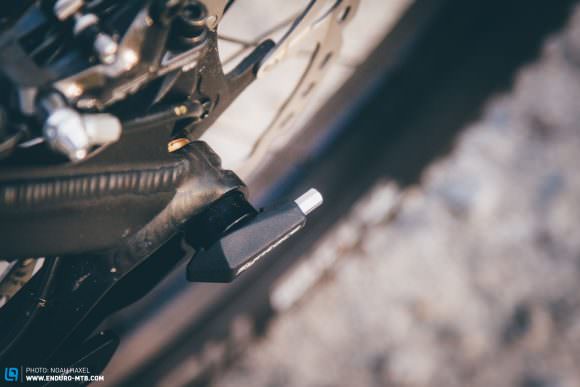

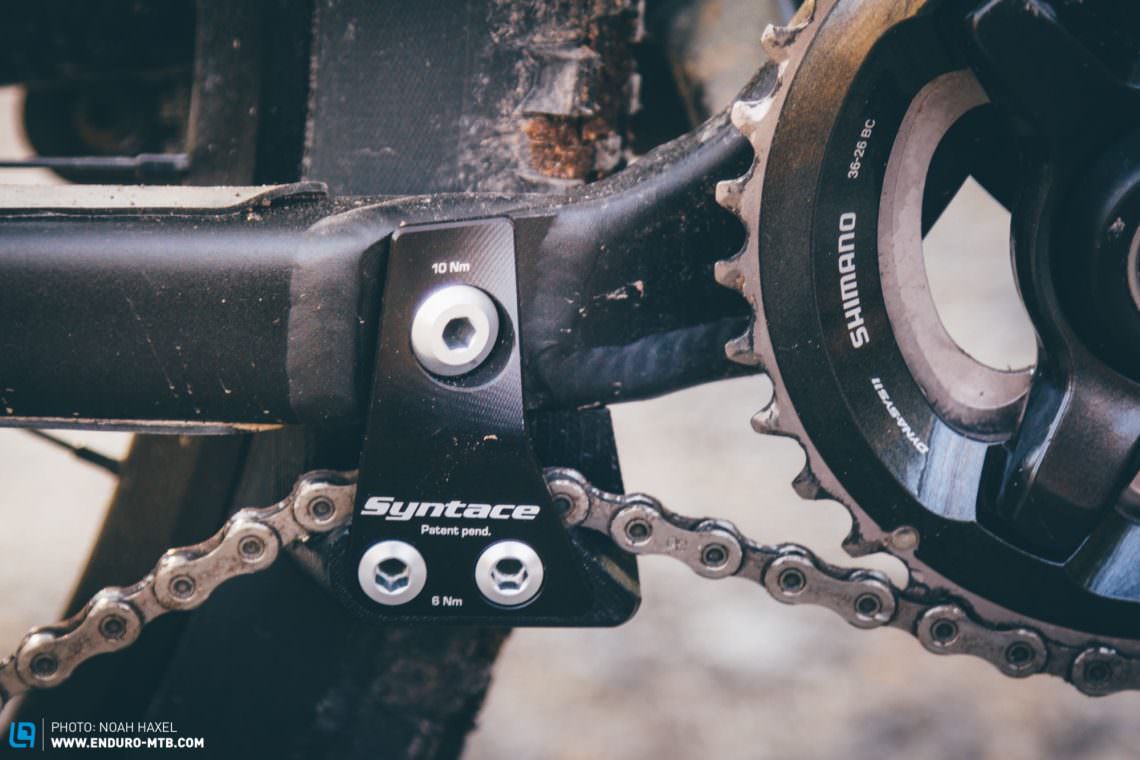
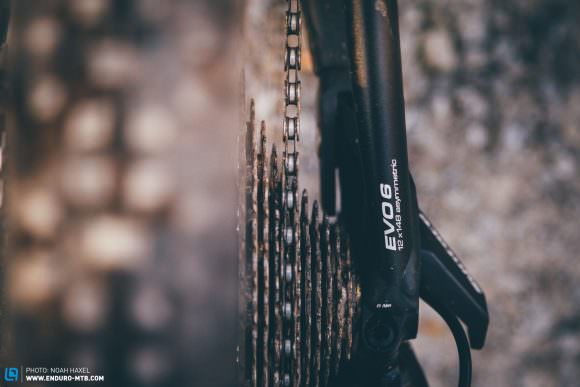
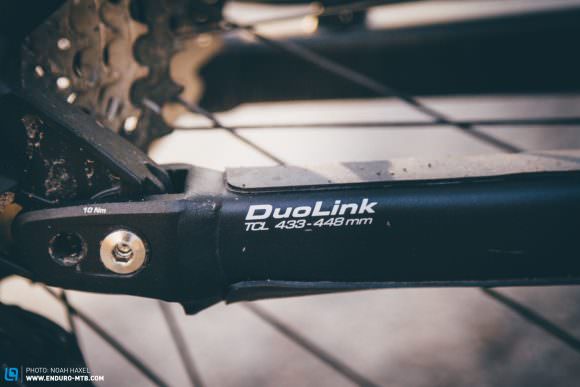
The spec of the Liteville 101 MK1 Trail Factory Machine
The spec of the 101 Trail Factory Machine goes for 120 mm of RockShox suspension at the front and back, pairing a PIKE RCT3 fork with a Monarch RT3 DebonAir rear shock. There’s a Shimano XT M8000 drivetrain with a 2×11 setup, 36/26 chainrings and 11-42 XT cassette. The XT brakes do their job well, but were a little inconsistent on this test bike.
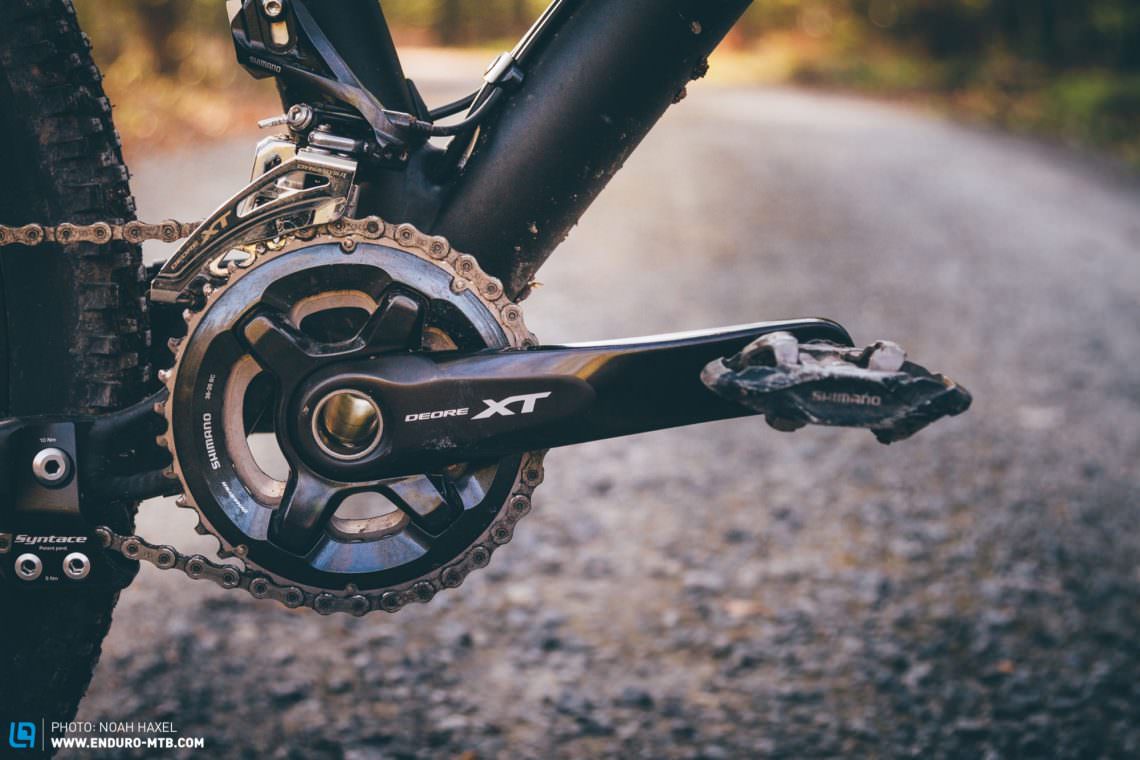
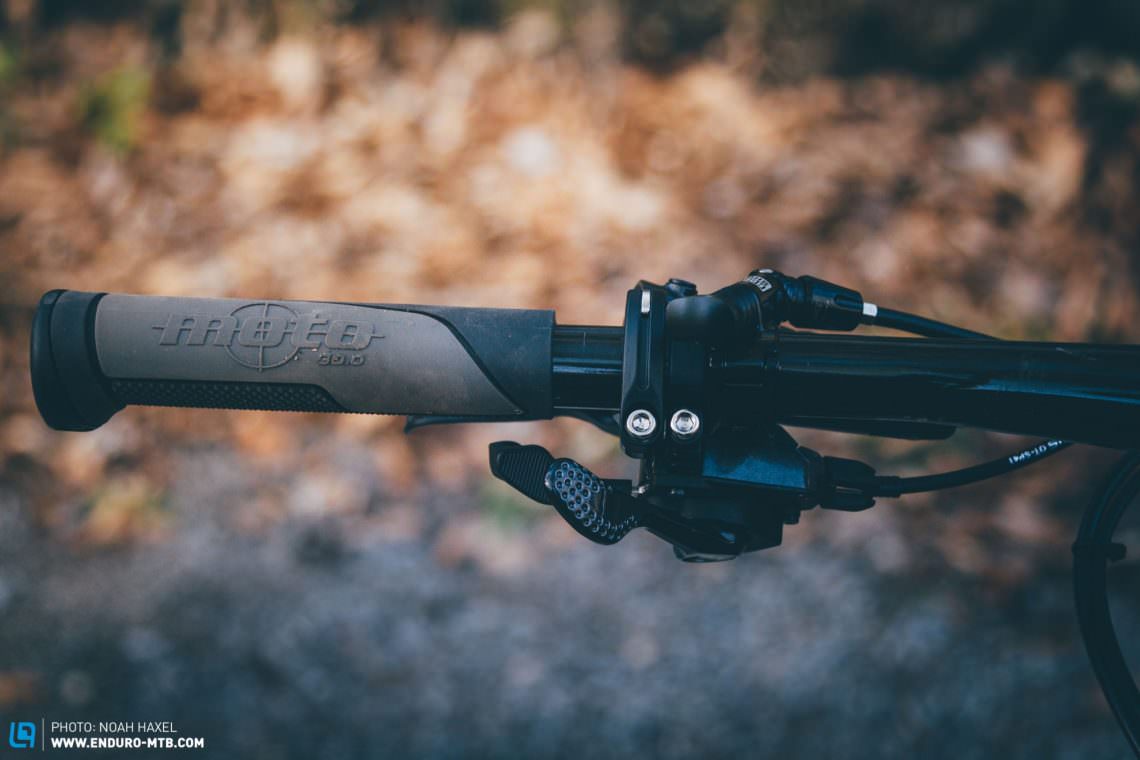
Forks: RockShox Pike RCT3 120 mm
Rear shock: RockShox Monarch RT3 DebonAir 120 mm
Stem: Syntace F109 50 mm
Bars: Syntace Vector Carbon High10 760 mm
Seatpost: RockShox Reverb Stealth 150 mm
Drivetrain: Shimano Deore XT 2×11
Brakes: Shimano Deore XT 203 mm / 180 mm
Wheelset: Syntace W35 MX 29″ / W30 MX 27,5″
Tires: Schwalbe Racing Ralph 2.25 / NobbyNic 2.35
Weight: 13.14 kg
Price: 5.498 €
The Syntace W35/30 MX wheels with a 29″ at the front and 27.5″ at the rear perform reliably, bringing with them a pretty noisy soundtrack courtesy of the HiTorque MX rear wheel hub. On the rims (35 mm and 30 mm respectively), Liteville went for a 2.35″ Schwalbe Nobby Nic at the front and a 2.25″ Racing Ralph at the rear. Thanks to the RockShox Reverb dropper post with 150 mm of hub, the satisfyingly ergonomic SQ Lab saddle is kept out of the way on steep descents. The cockpit is made up of the proven 760 mm Syntace Vector Carbon High10 bars that teams with the Syntace Megaforce 2 stem at 50 mm to create great handling.

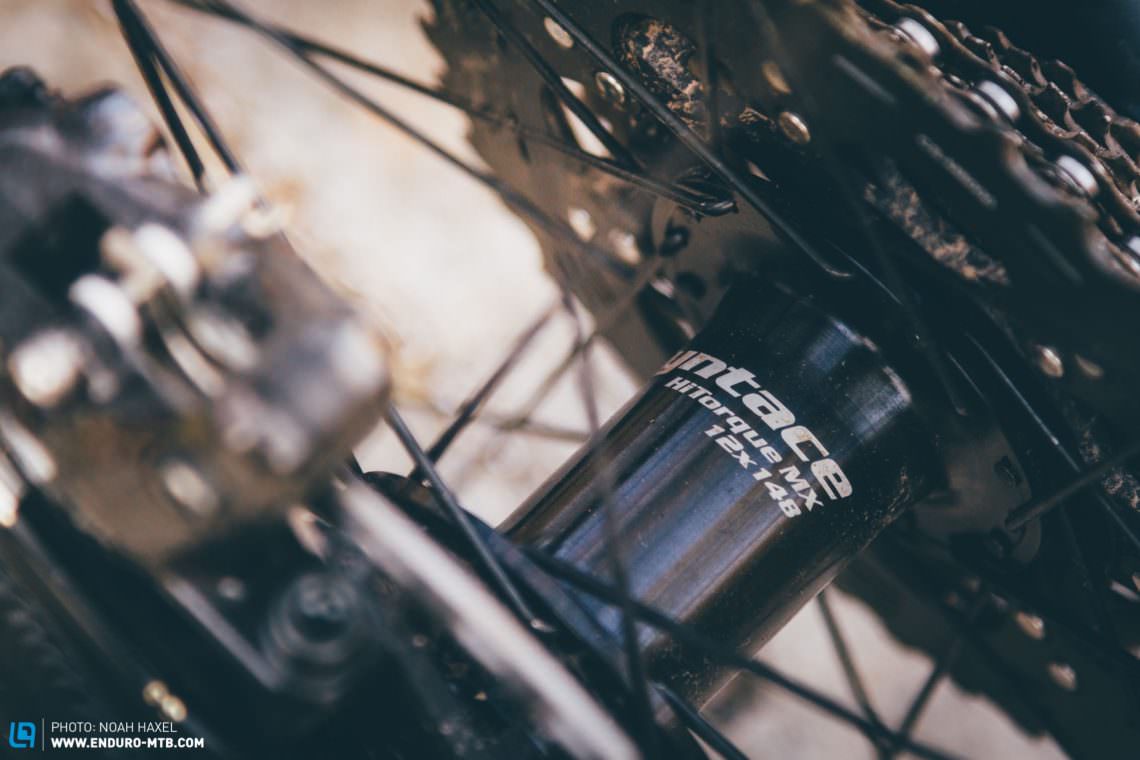
The geometry of the Liteville 101 MK1
Liteville decided it was time to offer options, so be prepared to trawl through their range of configurations: we rode a medium-sized test bike with a 29er at the front and 27.5″ rear wheel – however, you can get this as a full 29er, or if you go for a smaller size then you can pick a full 27.5″ bike or even a 26er. This goes back to Liteville’s ‘ScaledSizing’ concept, meaning that wheelsize should suit the rider’s physical proportions. Their aim is to deliver the same sort of ride to all riders: great roll-over characteristics with short, playful chainstays. The big wheel at the front donates the roll-over ability, more powerful braking and better tracking. At the rear, the smaller wheel generates more stability, agility and a lower weight. Here’s the geometry of the 101 Trail Factory Machine that we had on test:
| Frame | 101 |
| Size | M |
| Top tube | 595 mm |
| Head tube | 120 mm |
| Seat tube | 430 mm |
| Seat tube angle | 73,7° |
| Head tube angle | 65,9 ° |
| Bottom bracket height | 337 mm |
| Wheelbase | 1163 mm |
| Reach | 418 mm |
| Stack | 606 mm |
You’ll probably veer towards dubbing the 432.8 mm chainstays as short, but they’ve got the stability to instill confidence on rapid descents. Liteville’s short frame and the 27.5″ rear wheel marry to achieve much-appreciated agility. Considering that it’s a trail fully that you can use for longer rides too, the 65.9° head angle is pretty slack, generating a comfortable handling package without the sensation of going over the bars.
The Liteville 101 MK1 Trail Factory Machine on the trail
On climbs we ended up putty in the hands of the slightly less-than-100%-efficient rear. As your weight is further back, you end up sinking through the predetermined sag, which ultimately impacts on its efficiency. While it might in fact be an advantage on technical climbs – with increased compression at the rear – it’s definitely a hindrance on long, thankless gravel climbs. However, with a firm (or even locked-out) rear shock, this all-rounder grinds its way up with a grin, flaunting its competence. The front wheel stays firmly planted when the gradient hits double figures, even with the 73.7° seat angle. Peacock your way up the climbs and the 101 will make you proud – but just remember to lock-out the rear shock.
The small rear wheel brings with its two major advantages: one being agility, and the other the ability to manual. The 101 rails its way over the trails, with the big front wheel tracking its line smoothly and rolling over trail chatter. The RockShox RCT3 forks are the ultimate choice for this Liteville, as their responsiveness and moderate progression are an asset to the travel’s efficiency. The 35 mm stanchions on the fork reinforce the front stiffness, which is a major bonus on hard-hitting terrain. Adding to the precision, the rear donates a calming influence to the MK1 on bumpy, high-speed sections.
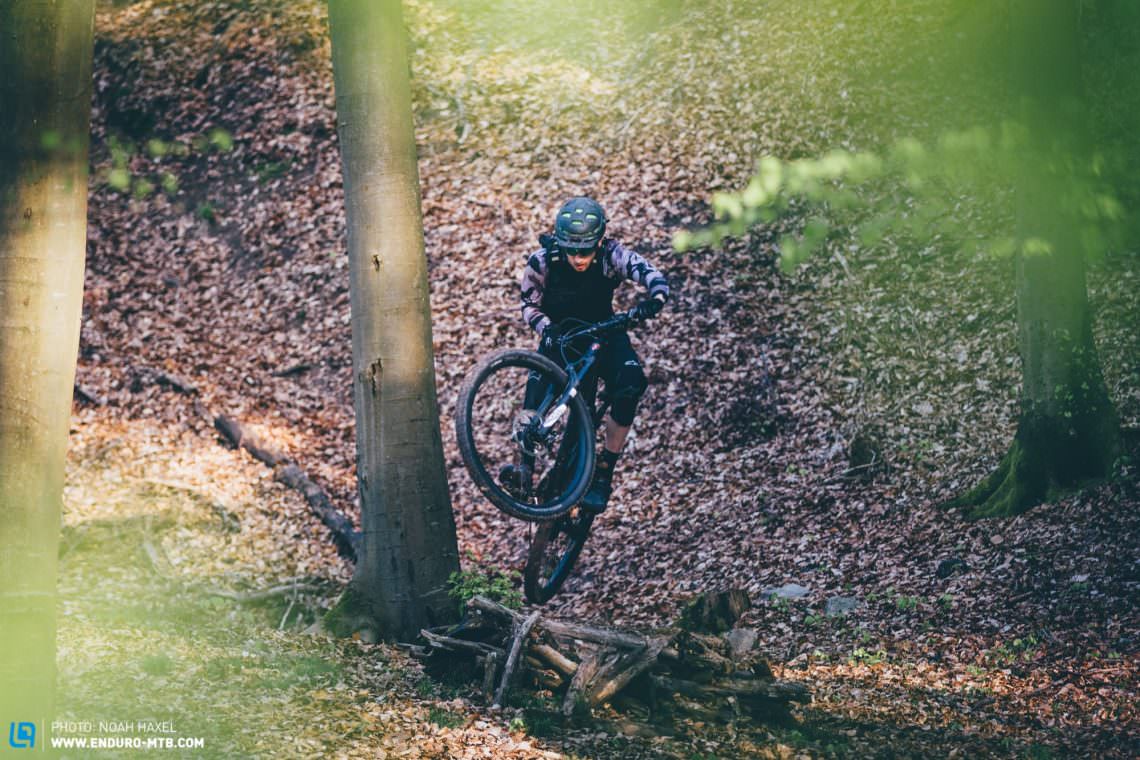
The Schwalbe Nobby Nic/Racing Ralph combo can handle regular rides in the woods, but if you’re taking on more tricky singletrack then you’d be wise to choose ones with more aggressive tread. If we had one option to further refine Liteville’s concept of stability, lightweight and reliability when it comes to their spec choices, we’d pick the 1×11 drivetrain, which would tidy the cockpit, lower the weight and make shifting (and servicing) more intuitive.
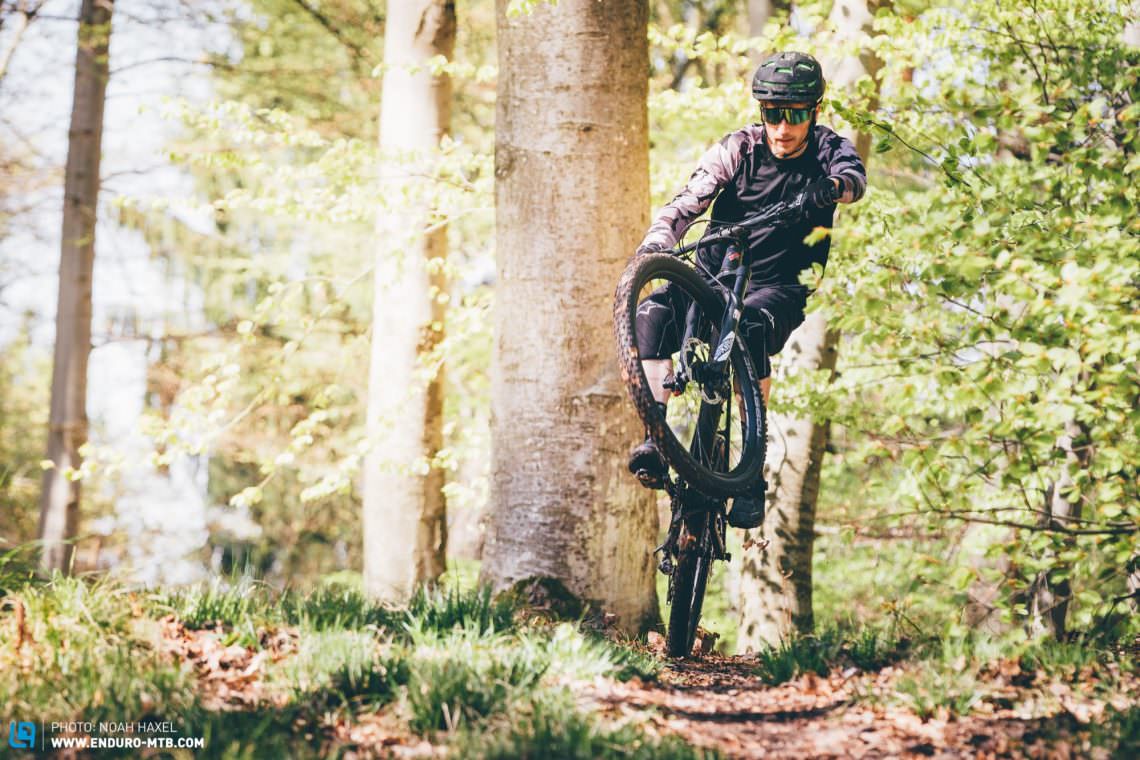
Conclusion
Both Syntace and Liteville have been in full development mode for years, with their love for detail being a staple part of the process. However, with development and small batches comes costs, and the proof is in the price tag of the Liteville 101 MK1. A solidly built trail bike, the MK1 Trail Factory Machine has been devised to excel on a wide range of trails and terrains. The ScaledSizing tunes the wheelsizes to the rider, allowing the Liteville 101 to draw stability from the front wheel and team it with a super lively rear end. The 120 mm of suspension from RockShox and the high quality Syntace components render it capable of gnar, steep downhills and alarmingly technical climbs. In keeping with their style, the 101 easily slips under the radar without drawing undue attention (aside from its freewheel!) – but it deserves the attention anyway. Delivering a superb ride, the 101 unites some great characteristics, but we’d recommend splashing out the extra € 350 for the 1×11 model with SRAM’s X01 drivetrain.
Did you enjoy this article? If so, we would be stoked if you decide to support us with a monthly contribution. By becoming a supporter of ENDURO, you will help secure a sustainable future for high-quality mountain bike journalism. Click here to learn more.
Words: Photos: Noah Haxel









